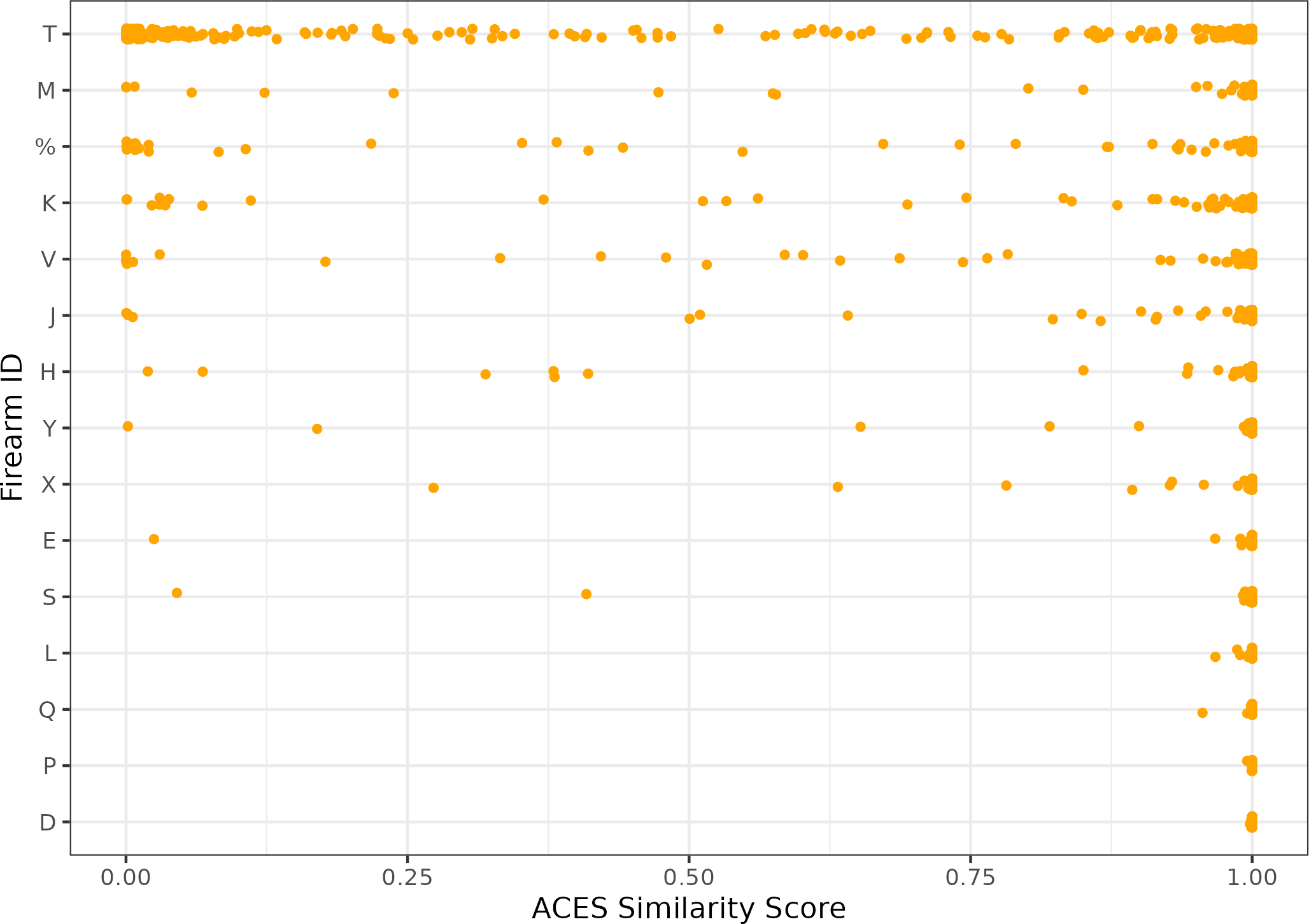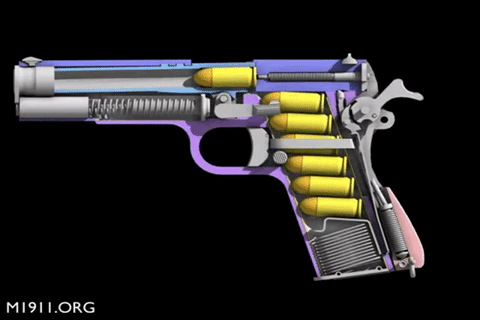
Visual Diagnostics for Algorithmic Cartridge Case Comparisons
Joseph Zemmels, Heike Hofmann, Susan VanderPlas
Acknowledgements
Thank you to everyone at the Roy J Carver High Resolution Microscopy Facility for collecting cartridge case scans.
Funding statement
This work was partially funded by the Center for Statistics and Applications in Forensic Evidence (CSAFE) through Cooperative Agreement 70NANB20H019 between NIST and Iowa State University, which includes activities carried out at Carnegie Mellon University, Duke University, University of California Irvine, University of Virginia, West Virginia University, University of Pennsylvania, Swarthmore College and University of Nebraska, Lincoln.
Background
Cartridge Case Comparisons
- Determine whether two cartridge cases were fired from the same firearm.
Cartridge Case: metal casing containing primer, powder, and a projectile
Breech Face: back wall of gun barrel
Breech Face Impressions: markings left on cartridge case surface by the breech face during the firing process
Current Practice
Cartridge case recovered from crime scene vs. fired from suspect’s firearm
Place evidence under a comparison microscope for simultaneous viewing (Thompson 2017)
Assess the “agreement” of impressions on the two cartridge cases (AFTE Criteria for Identification Committee 1992)

Impression Comparison Algorithms
National Research Council (2009):
“[T]he decision of a toolmark examiner remains a subjective decision based on unarticulated standards and no statistical foundation for estimation of error rates”
President’s Council of Advisors on Science and Technology (2016):
“A second - and more important - direction is (as with latent print analysis) to convert firearms analysis from a subjective method to an objective method. This would involve developing and testing image-analysis algorithms for comparing the similarity of tool marks on bullets [and cartridge cases].”
We discuss the Automatic Cartridge Evidence Scoring (ACES) algorithm to compare 3D topographical images of cartridge cases
- Visual diagnostics aid in understanding what the algorithm does “under the hood.”
Cartridge Case Comparison Algorithms
Ames I Study
- Baldwin et al. (2014) collected cartridge cases from 25 Ruger SR9 pistols
Separated cartridge cases into quartets: 3 known-match + 1 unknown source
Match if fired from the same firearm, Non-match if fired from different firearms
218 examiners tasked with determining whether the unknown cartridge case originated from the same pistol as the known-match cartridge cases
- True Positive if a match is correctly classified, True Negative if non-match is correctly classified
| Match Conclusion | Non-match Conclusion | Inconclusive Conclusion | Total | |
|---|---|---|---|---|
| Ground-truth Match | 1,075 | 4 | 11 | 1,090 |
| Ground-truth Non-match | 22 | 1,421 | 735 + 2* | 2,180 |
- Inconclusive: conclusion when there is some agreement or disagreement in characteristics, but not enough to make a match or non-match conclusion (AFTE Criteria for Identification Committee 1992)
| True Positive (%) | True Negative (%) | Overall Inconclusives (%) |
|---|---|---|
| 99.6 | 65.2 | 22.9 |
Cartridge Case Data
3D topographic images using Cadre\(^{\text{TM}}\) TopMatch scanner from Roy J Carver High Resolution Microscopy Facility
x3p file contains surface measurements at lateral resolution of 1.8 micrometers (“microns”) per pixel
Cartridge Case Comparison Algorithms
Obtain an objective measure of similarity between two cartridge cases
- Step 1: Independently pre-process scans to isolate breech face impressions
- Step 2: Compare two cartridge cases to extract a set of numerical features that distinguish between matches vs. non-matches
- Step 3: Combine numerical features into a single similarity score (e.g., similarity score between 0 and 1)
Examiner takes similarity score into account during an examination
Challenging to know how/when these steps work correctly
Step 1: Pre-process
Isolate region in scan that consistently contains breech face impressions
How do we know when a scan is adequately pre-processed?
Step 2: Compare Full Scans
- Registration: Determine rotation and translation to align two scans
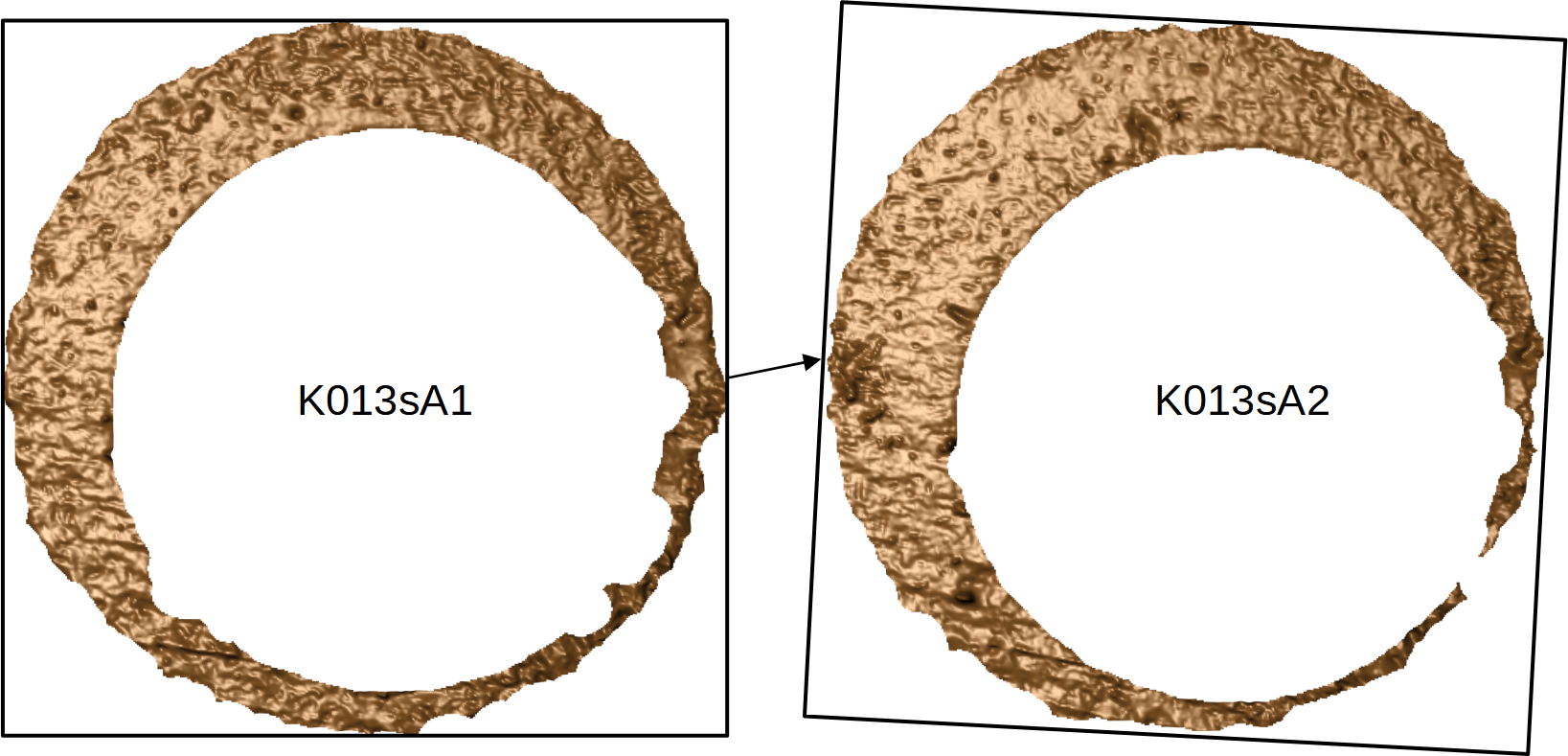
Cross-correlation function (CCF) measures similarity between scans
- Choose the rotation/translation that maximizes the CCF
Step 2: Compare Cells
Split one scan into a grid of cells that are each registered to the other scan (Song 2013)
For a matching pair, we assume that cells will agree on the same rotation & translation

Why does the algorithm “choose” a particular registration?
Step 3: Score
Measure of similarity for two cartridge cases
Maximized CCF (0.27 in example below) (Vorburger et al. 2007; Tai and Eddy 2018)
Congruent Matching Cells (11 CMCs in example below) (Song 2013)
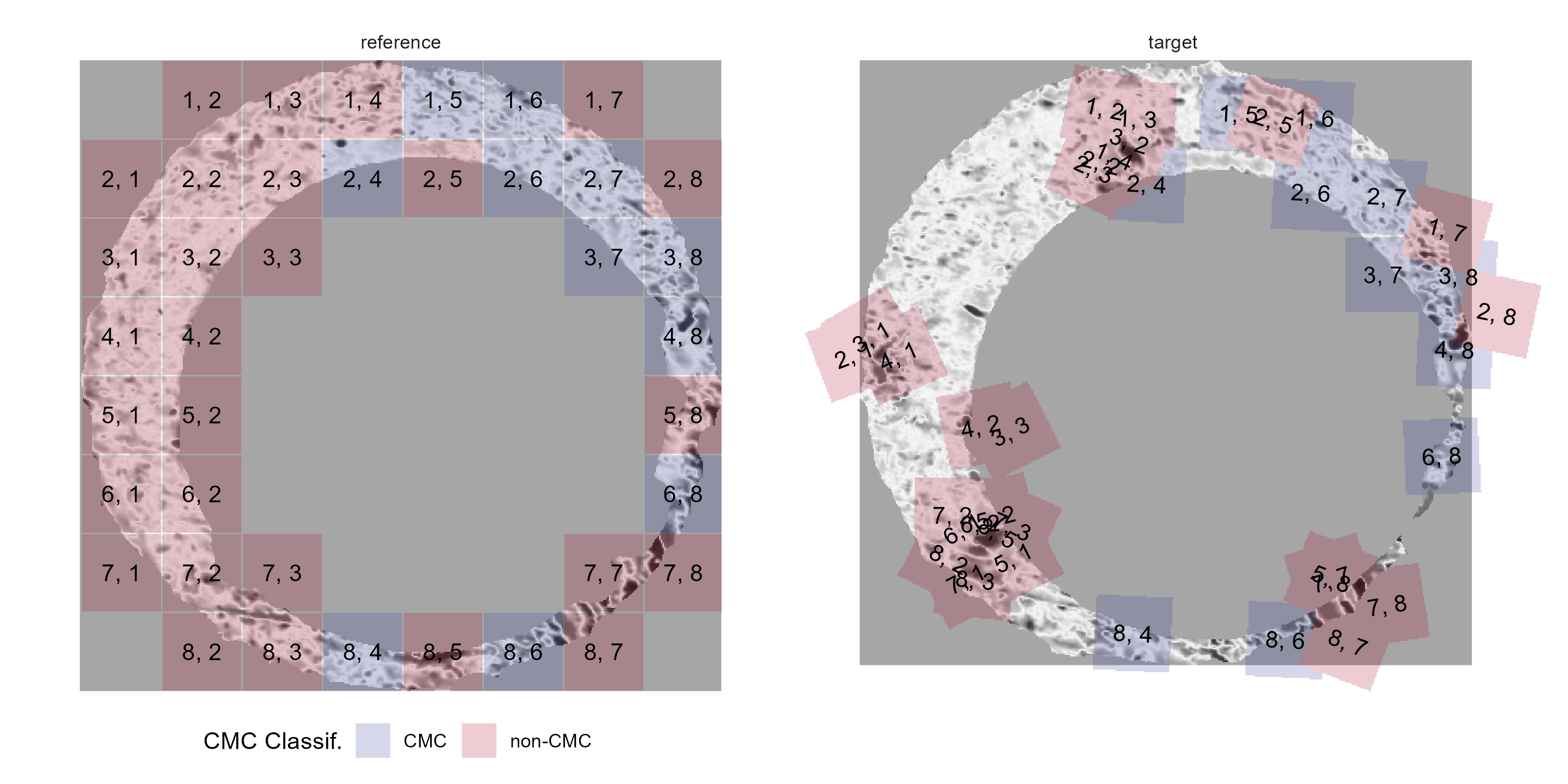
- Our approach: similarity score between 0 and 1 using a statistical model
What factors influence the final similarity score?
Visual Diagnostics
Visual Diagnostics for Algorithms
A number of questions arise out of using comparison algorithms
How do we know when a scan is adequately pre-processed?
Why does the algorithm “choose” a particular registration?
What factors influence the final similarity score?
We wanted to create tools to address these questions
Well-constructed visuals are intuitive and persuasive
Useful for both researchers and practitioners to understand the algorithm’s behavior
X3P Plot
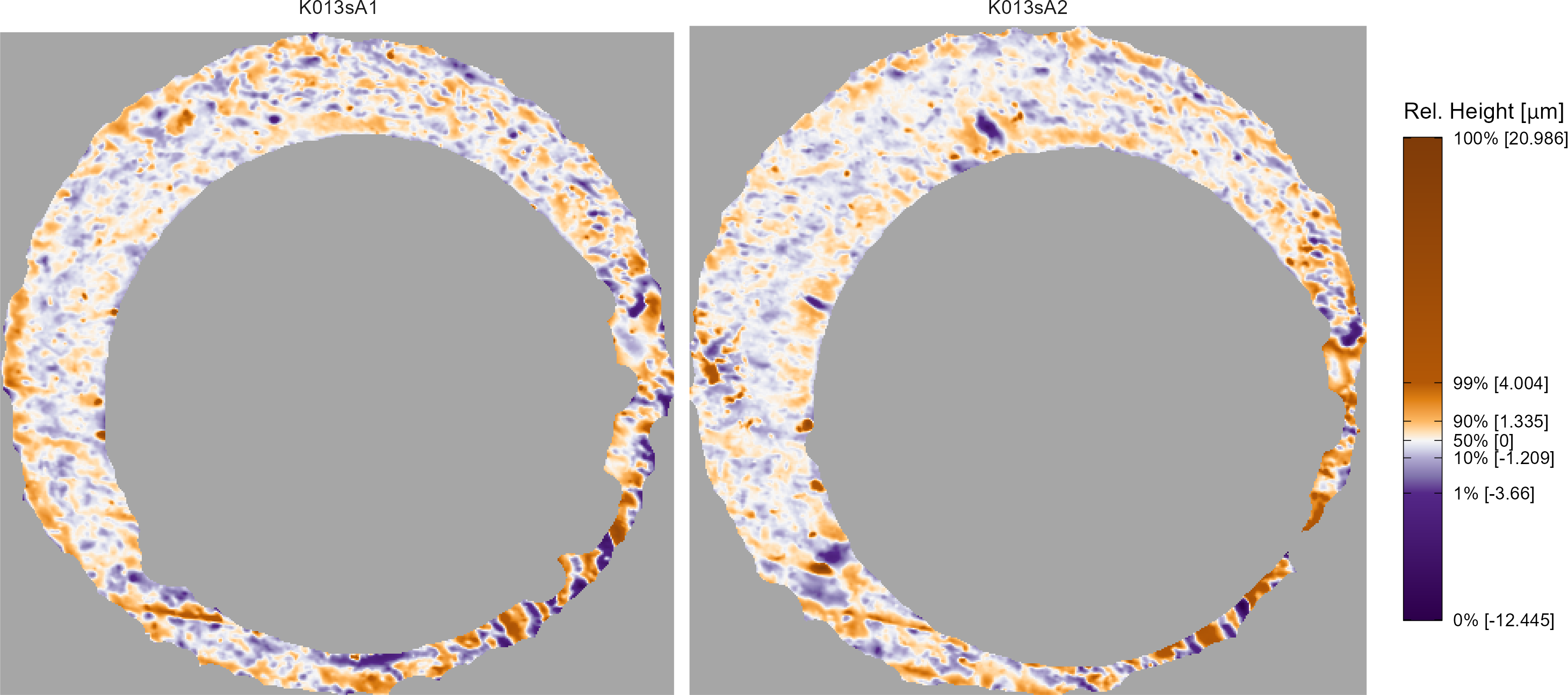
Emphasizes extreme values in scan that may need to be removed during pre-processing
Allows for comparison of multiple scans on the same color scheme
Map quantiles of surface values to a divergent color scheme

X3P Plot Pre-processing Example
- Useful for diagnosing when scans need additional pre-processing
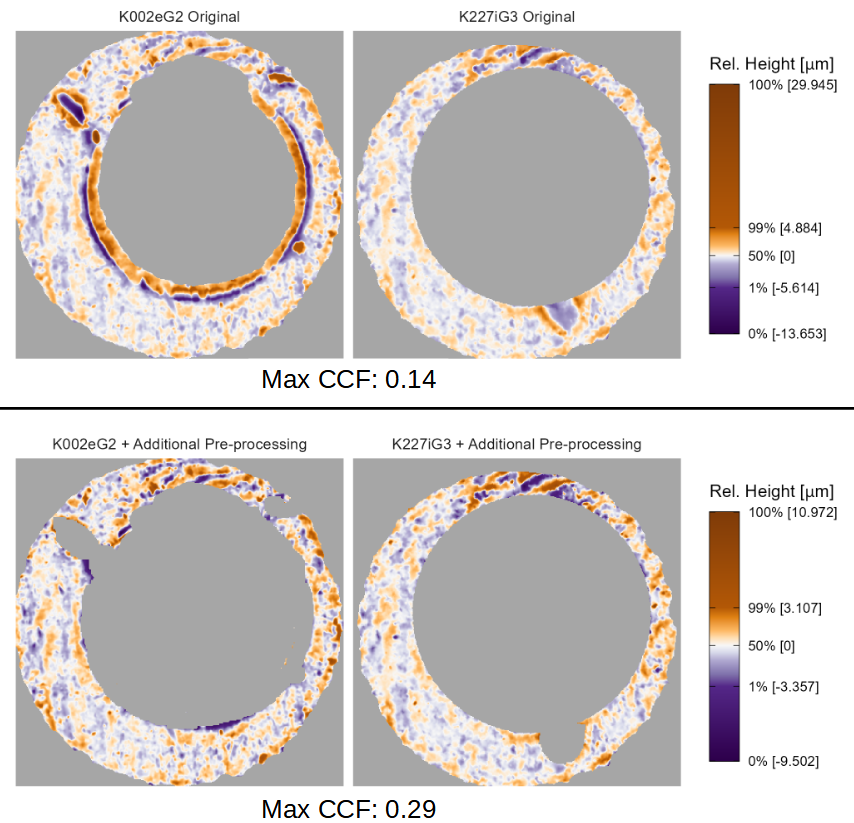
Comparison Plot
Separate aligned scans into similarities and differences
Useful for understanding a registration
- Similarities: Element-wise average between two scans after filtering elements that are less than 1 micron apart
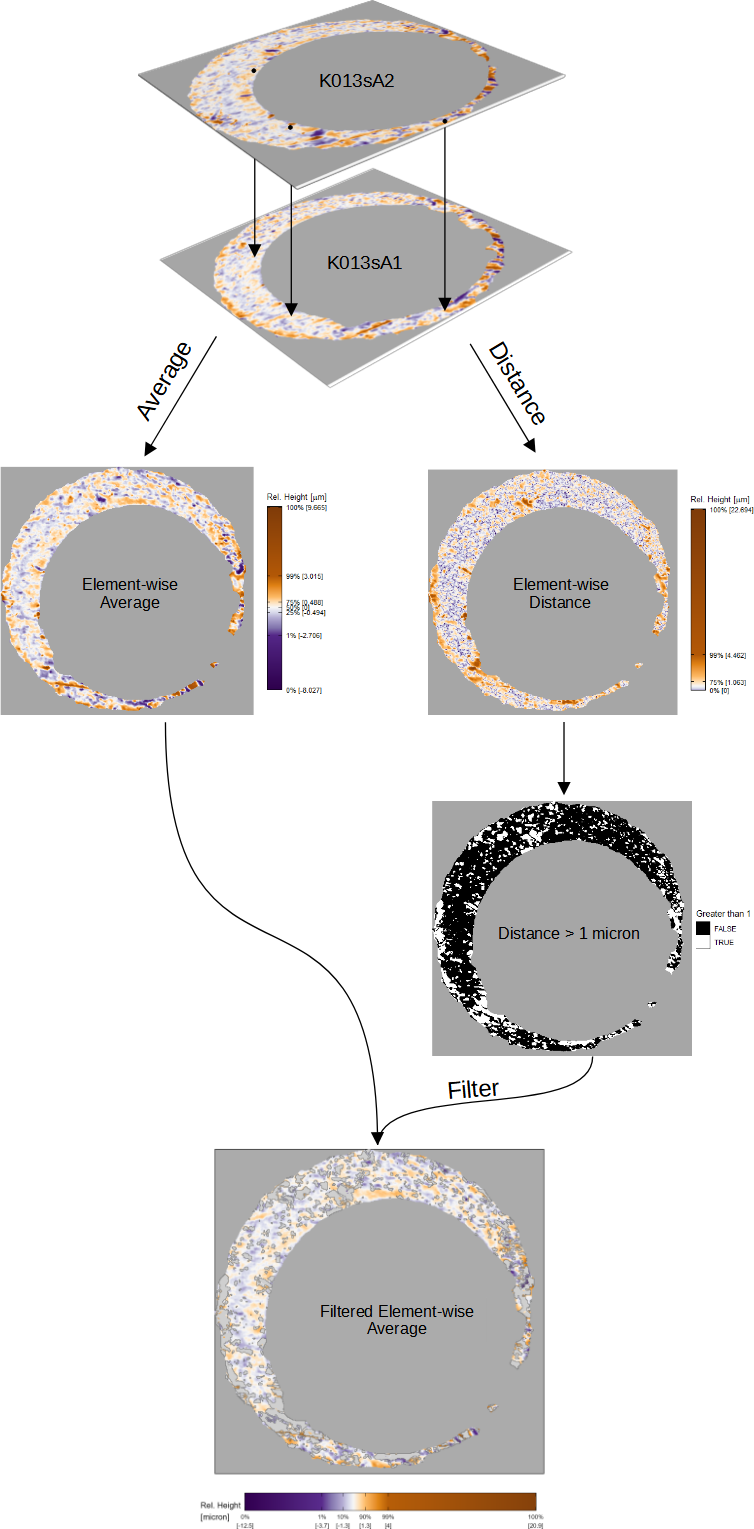
- Differences: Elements of both scans that are at least 1 micron apart

Full Scan Comparison Plot
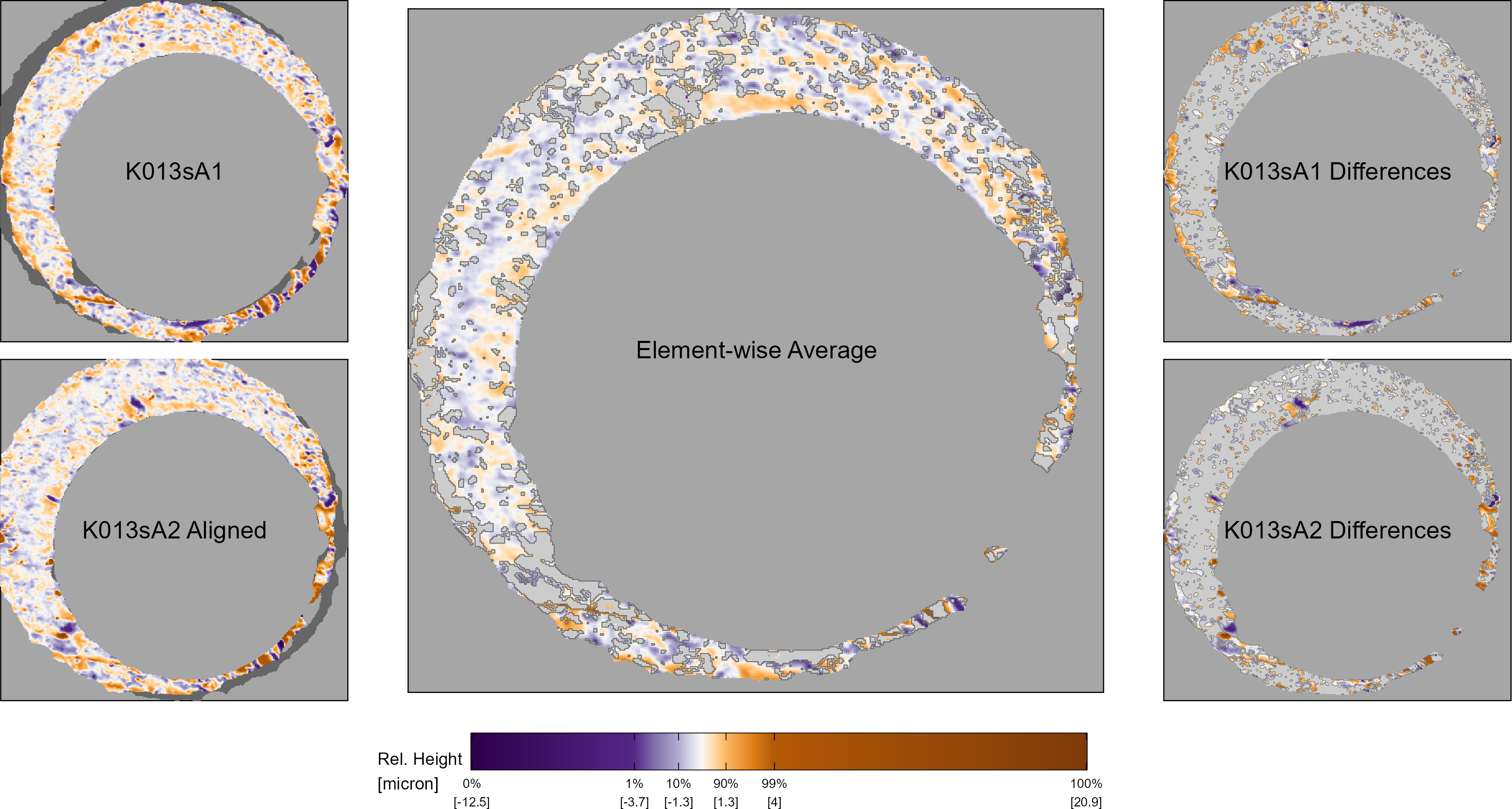
Cell Comparison Plot
::: {.fragment fade-out fragment-index=1}
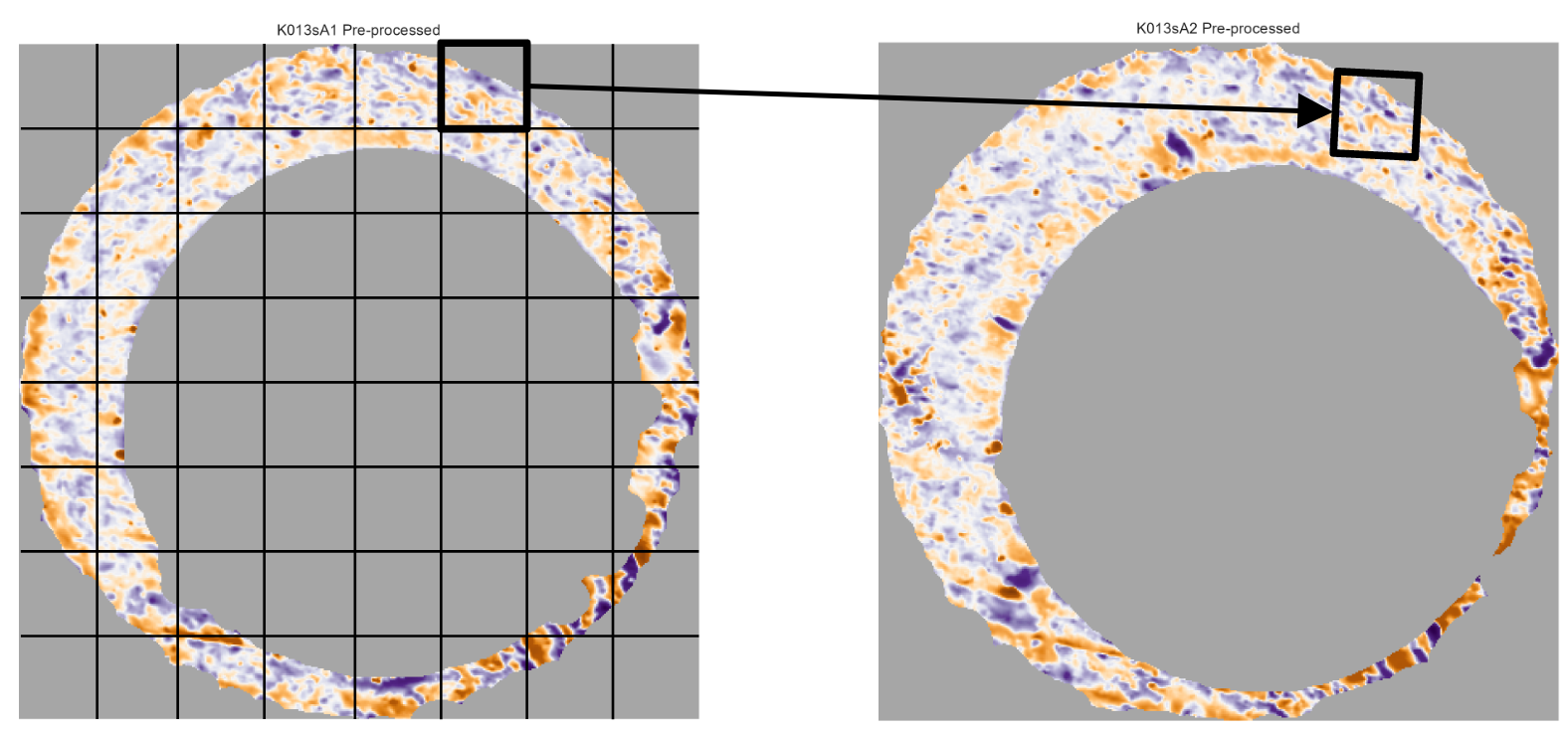
:::
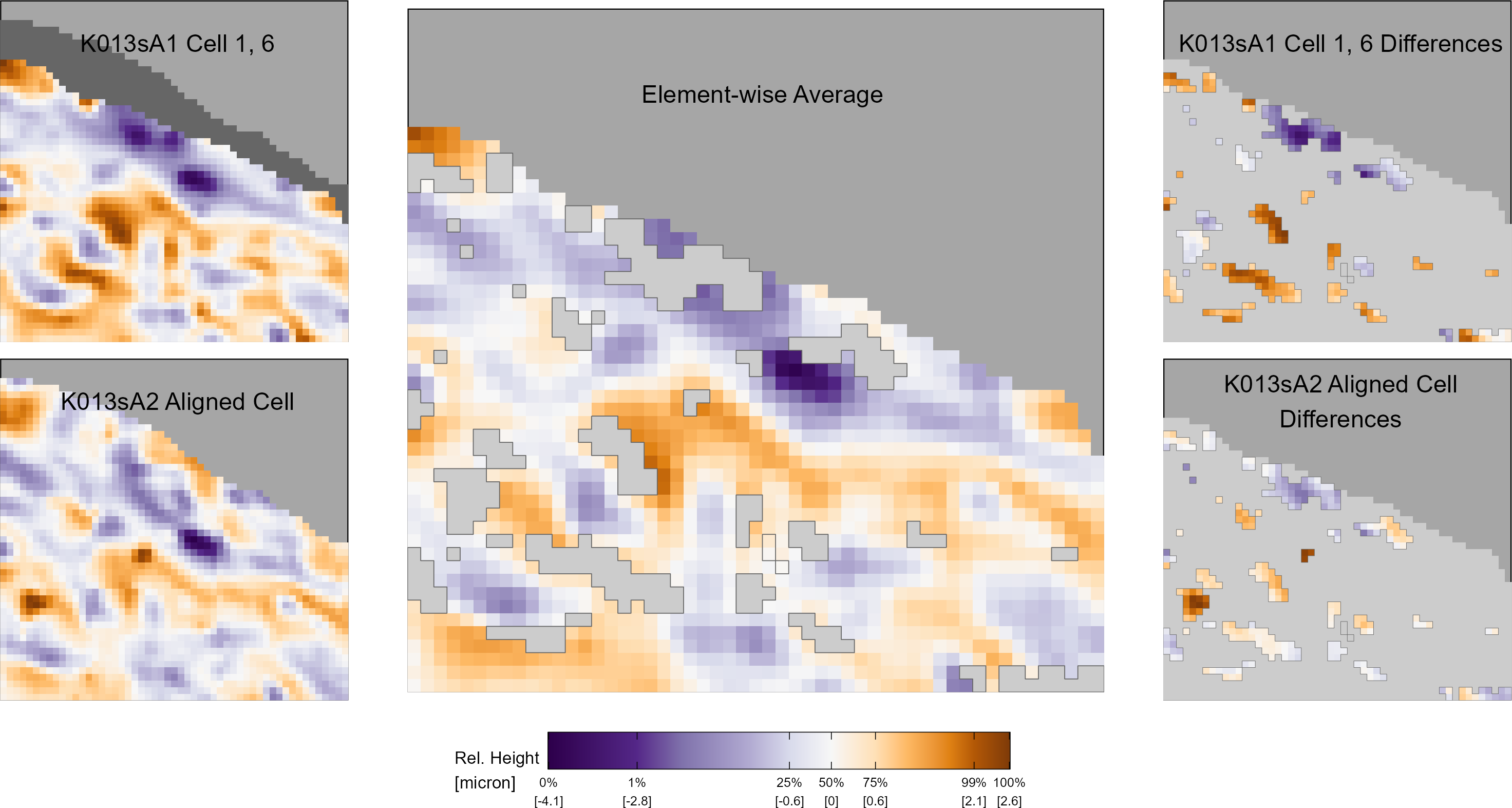
Translating Visuals to Statistics
- Translate qualitative observations made about the visual diagnostics into complementary numerical statistics
- Useful to quantify what our intuition says should be true for (non-)matching scans
For a matching cartridge case pair…
There should be (many) more similarities than differences
The different regions should be relatively small
The surface values of the different regions should follow similar trends
Statistics are useful for justifying/predicting the behavior of the algorithm
Similarities vs. Differences Ratio
- There should be more similarities than differences
Ratio between number of similar vs. different observations
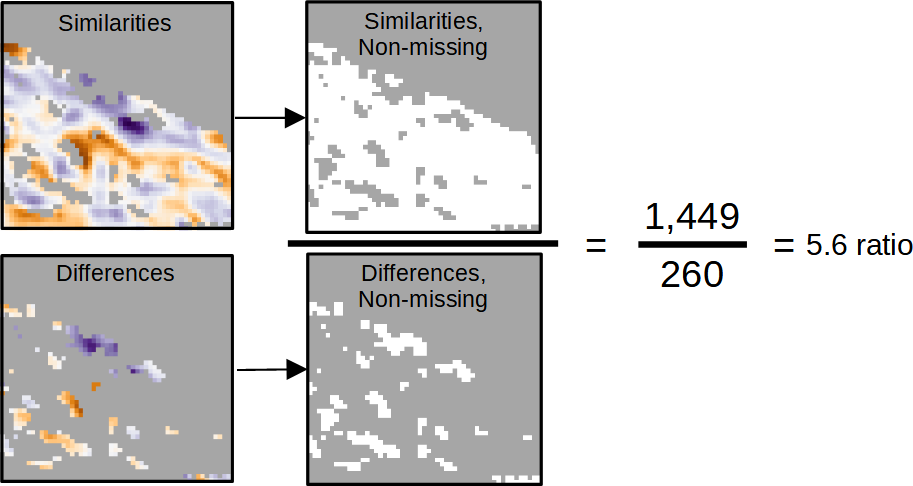
Compare to a non-match cell comparison:
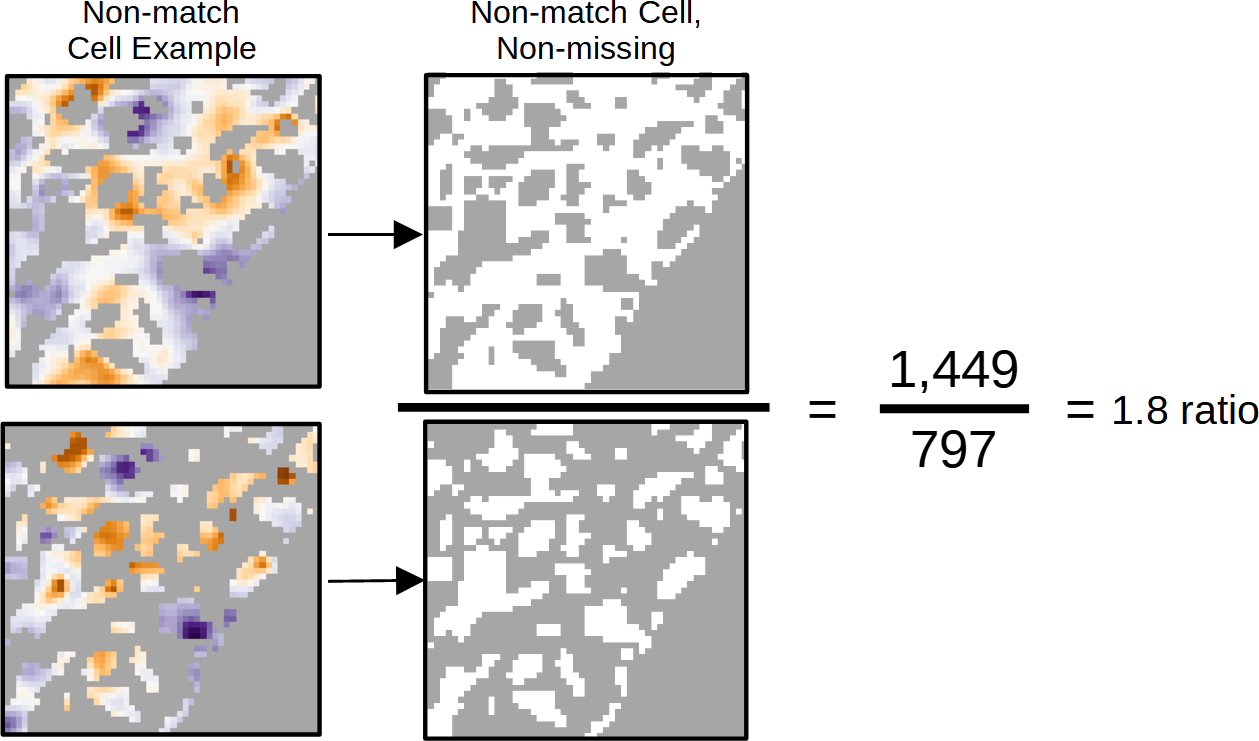
Different Region Size
- The different regions should be relatively small
Size of the different regions

Compare to a non-match cell comparison:

Different Region Correlation
- The surface values of the different regions should follow similar trends
Correlation between the different regions of the two scans

Compare to a non-match cell comparison:
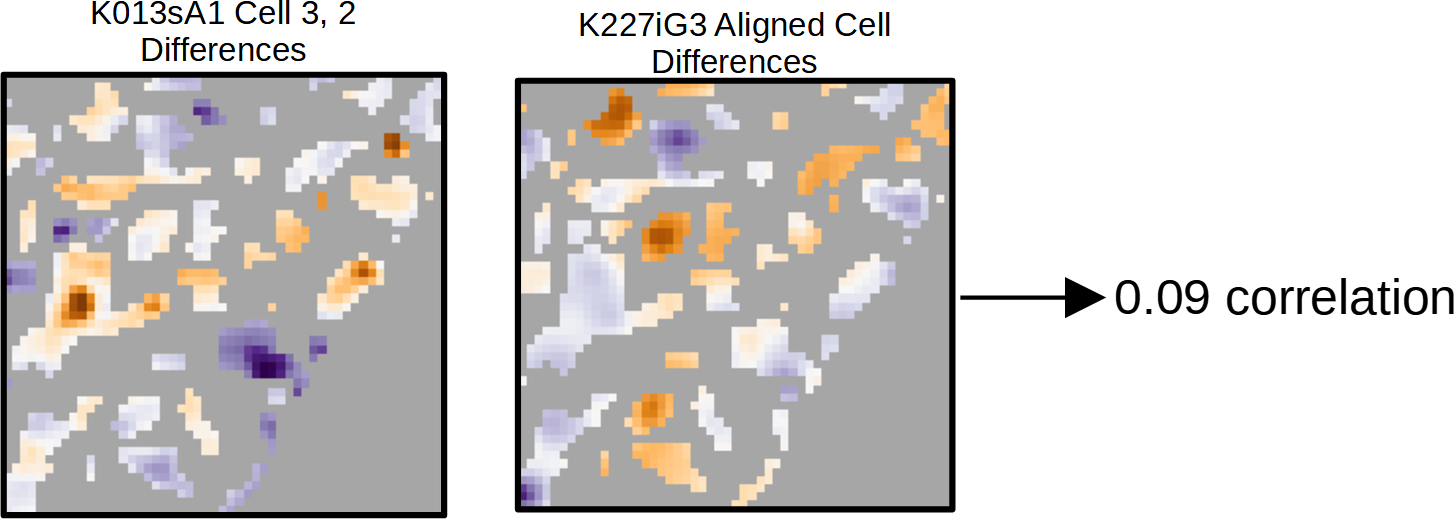
Automatic Cartridge Evidence Scoring (ACES) Algorithm
Automatic Cartridge Evidence Scoring

- Comparison algorithm that pre-processes, compares, and scores two cartridge case scans
- Computes 19 numerical features for each cartridge case pair
- Computes similarity score between 0 and 1 for a cartridge case pair using trained statistical model
Visual Diagnostic Features
- Use visual diagnostic statistics discussed earlier as numerical features
Features:
From the full scan comparison:
Similarities vs. differences ratio
Average and standard deviation of different region sizes
Different region correlation
From cell-based comparison:
Average and standard deviation of similarities vs. differences ratios
Average and standard deviation of different region sizes
Average different region correlation
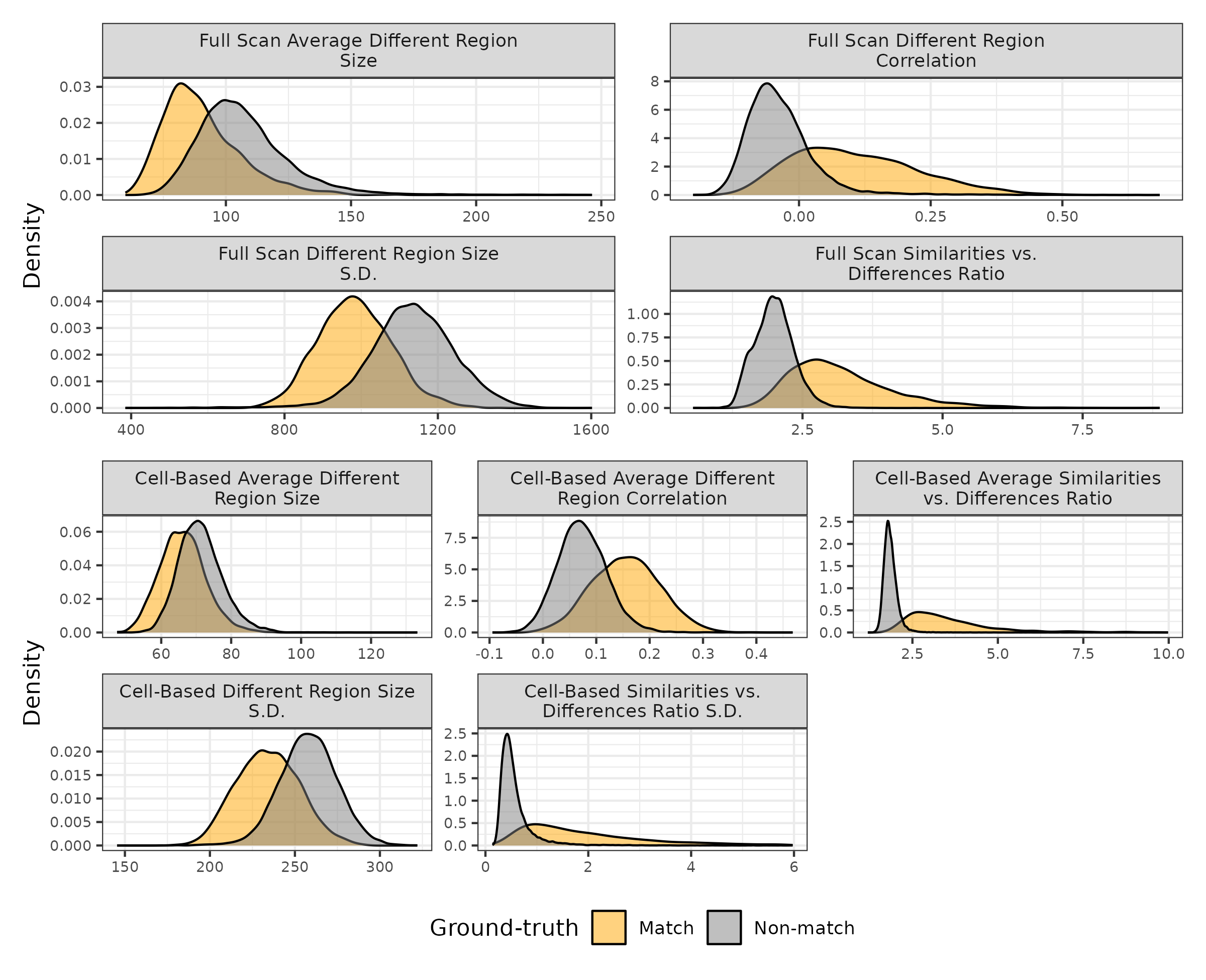
Registration-based Features
For a matching cartridge case pair…
Correlation should be large at the full scan and cell levels
Cells should “agree” on a particular registration
Compute summary statistics of full-scan and cell-based registration results
Features:
Correlation from full scan comparison
Mean and standard deviation of correlations from cell comparisons
Standard deviation of cell-based registration values (horizontal/vertical translations & rotation)

Density-based Features
For a matching cartridge case pair…
Cells should “agree” on a particular registration
The estimated registrations between the two comparison directions should be opposites
- Apply Density-Based Spatial Clustering of Applications with Noise (DBSCAN) algorithm to the cell-based registration results (Ester et al. 1996; Zhang et al. 2021)

Features:
DBSCAN cluster indicator
Average DBSCAN cluster size
Absolute sum of density-estimated rotations
Root sum of squares of the cluster-estimated translations
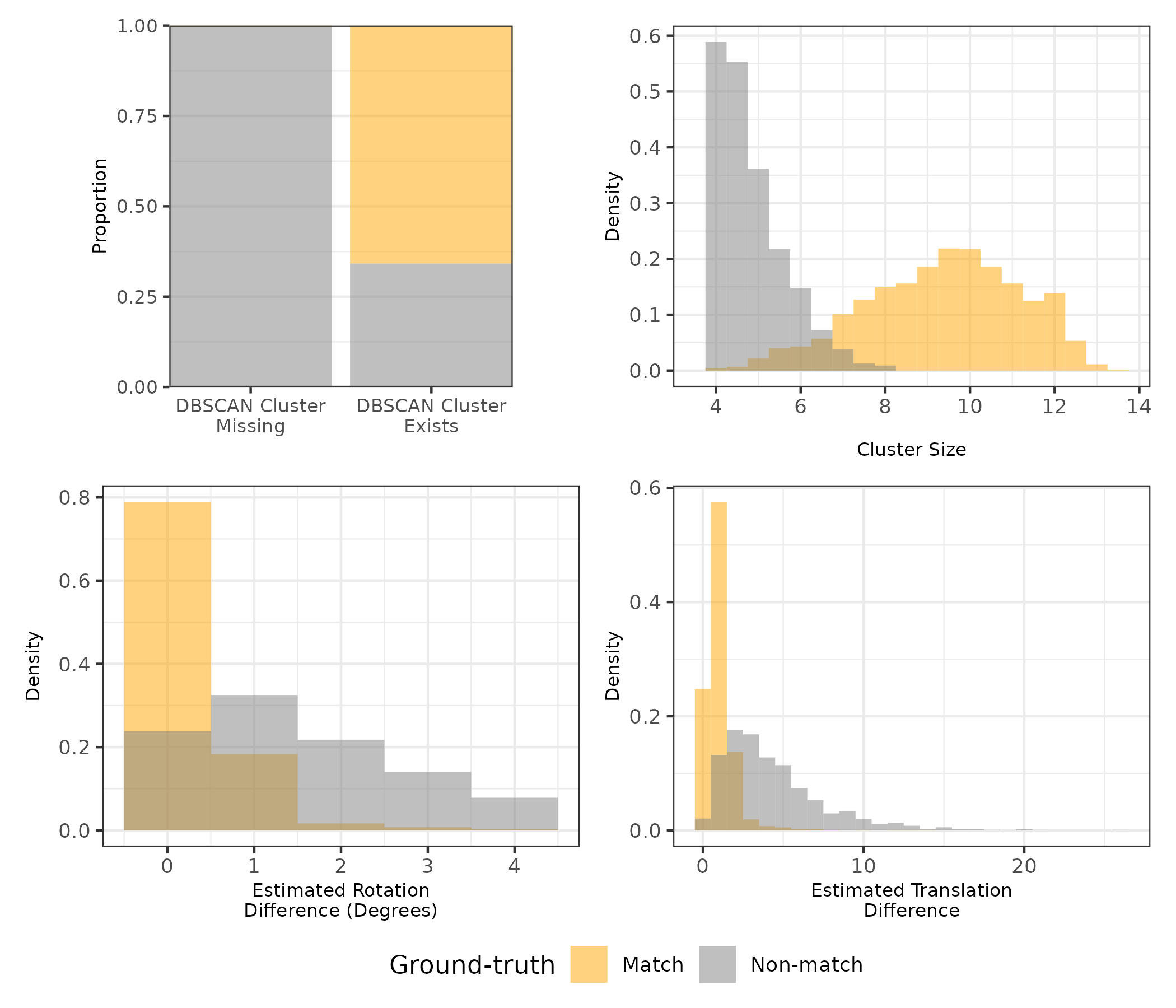
ACES Statistical Model
Compute 19 features for each pairwise comparison
Use 510 cartridge cases from Baldwin et al. (2014) to fit a logistic regression classifier
Train random logistic regression using 21,945 pairwise comparisons from 210 scans
- Classify pairs as a “match” or “non-match” based on similarity score
Explore two optimization criteria:
Model that maximizes the overall accuracy
Model that balances true positive and true negative rates
Test model on 44,850 pairwise comparisons from 300 scans
Compute true positive and true negative rates for each model
Consider distributions of similarity scores for truly matching and non-matching pairs
Test Classification Results
| Source | True Pos. (%) | True Neg. (%) | Overall Inconcl. (%) | Overall Acc. (%) |
|---|---|---|---|---|
| ACES, Min. Error | 92.3 | 99.9 | 0.0 | 99.4 |
| ACES, Balanced TP/TN | 95.7 | 98.1 | 0.0 | 97.9 |
| Ames I | 99.6 | 65.2 | 22.9 |
- Ames I (Baldwin et al. 2014) compared quartets (3 to 1) and considered inconclusives
- Class imbalance in test data: 3,081 match vs. 41,769 non-match comparisons
- The “Balanced TP/TN” model was selected based on the training data. The test data classifications aren’t guaranteed to also be balanced.
Similarity Score Distributions
We consider classification accuracy as a means of selecting/comparing models.
In practice, the examiner would use the similarity score as part of their examination.

- Matching comparisons from Firearm T cartridge cases tend to have lower similarity scores:

Conclusions
Conclusions & Future Work
Automatic comparison algorithms are useful for obtaining numerical measures of similarity for two pieces of evidence
Visual diagnostics help explain the inner mechanisms of comparison algorithms
Our visual diagnostic tools aid in understanding each step of a cartridge case comparison algorithm
- Also useful by themselves to visually compare cartridge case evidence
The Automatic Cartridge Evidence Scoring (ACES) algorithm shows promise at measuring the similarity between cartridge cases
Develop free, open source software to implement visual diagnostics & ACES
We train our model on 10 firearms, all with the same make/model and ammunition
Need additional “stress tests” (different ammunition/firearms, degradation, etc.)
Thank You!
- impressions R package for visual diagnostics
- scored R package for ACES algorithm
- cartridgeInvestigatR interactive web application
References
Appendix: Firearm-wise Similarity Scores
- Specific firearms in the test set tend to have lower associated similarity score for matching comparisons
